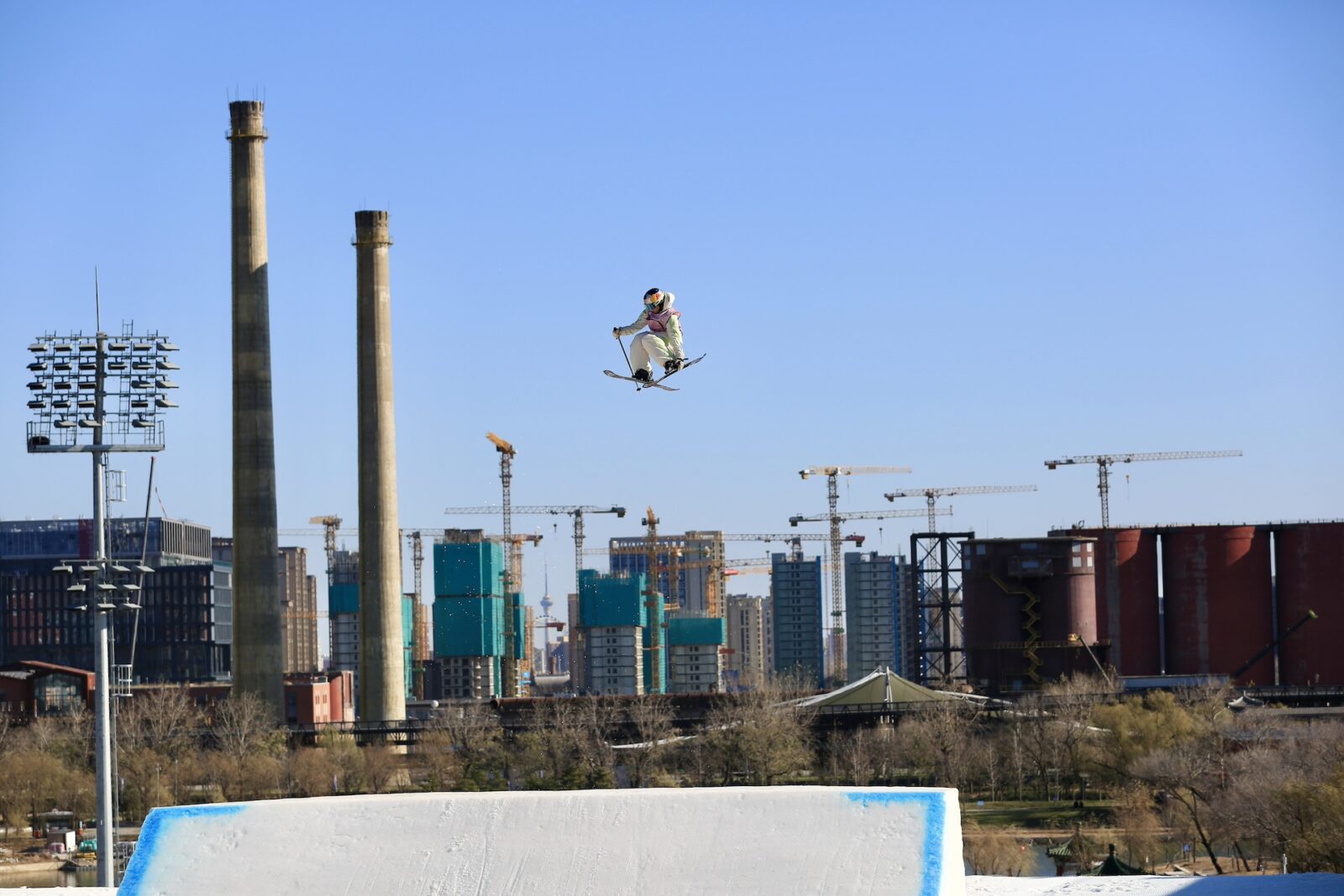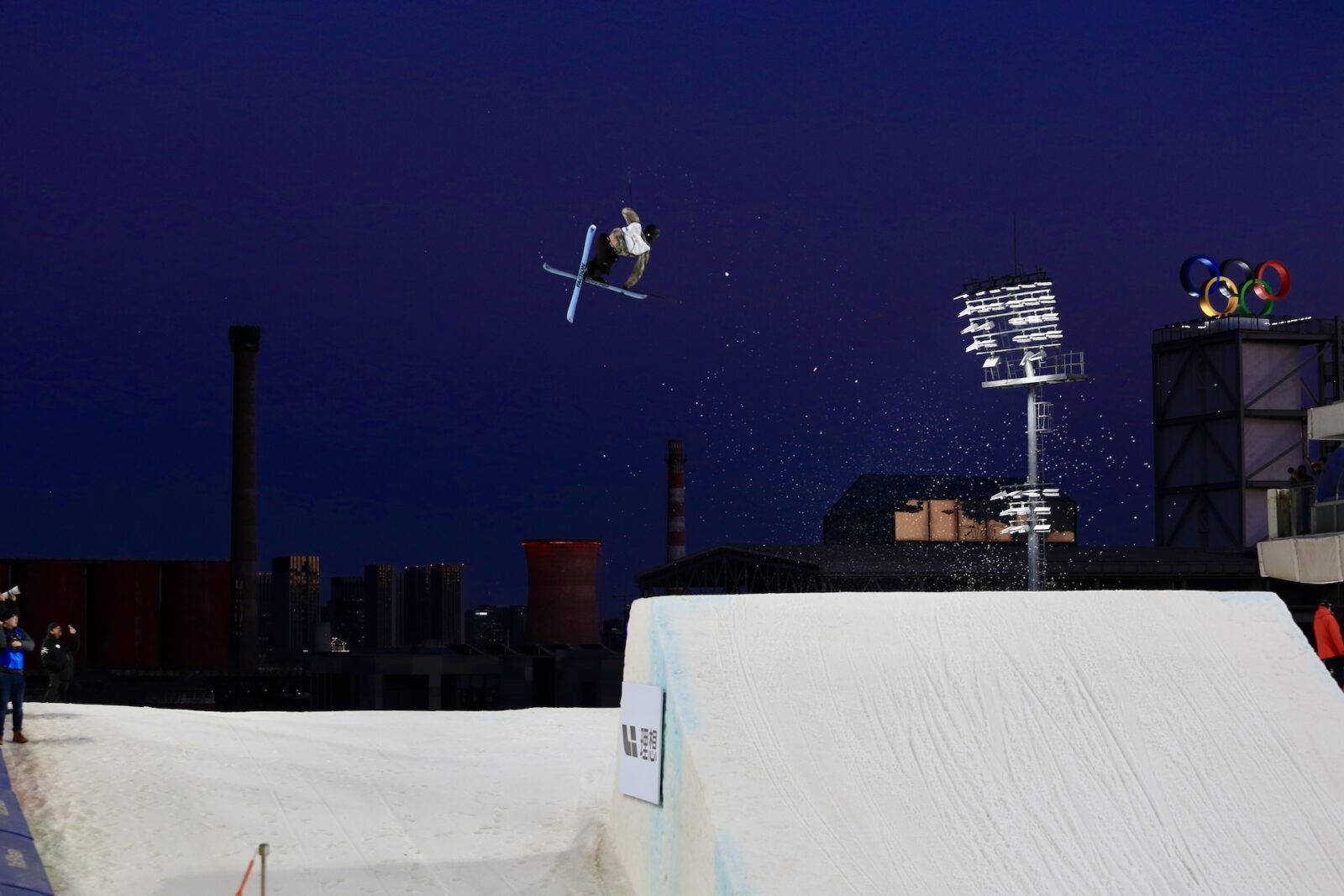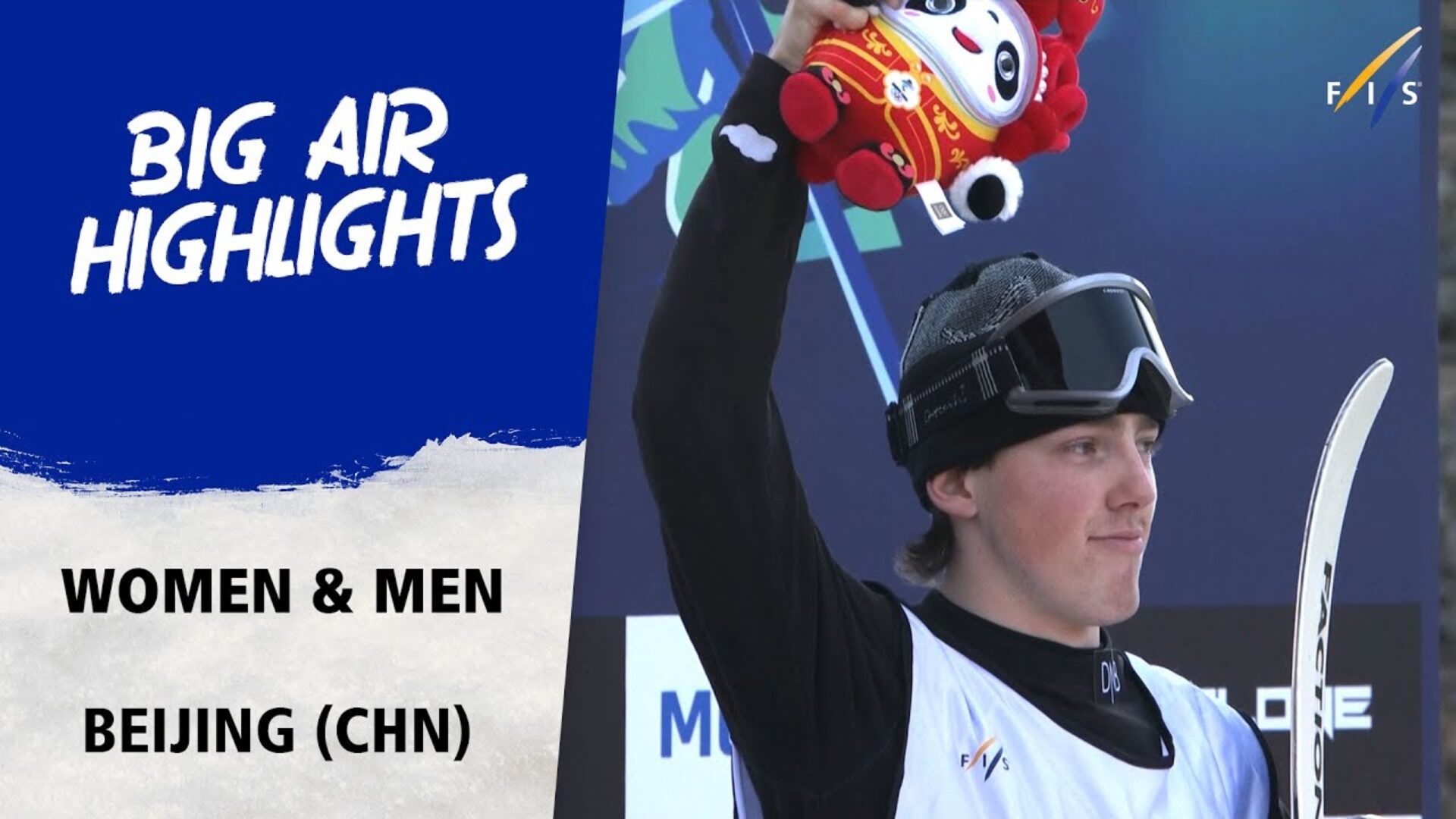Tess Ledeux won a record-breaking 16th World Cup and Tormod Frostad continued his purple patch in the Beijing Big Air filled with never-been-dones.

Event News
HighlightMore NBDs than a TillIbreakit edit
Big Air Beijing was a festival of NBDs
The second World Cup Big Air of the 2024/25 season went down between the industrial cooling towers of Beijing, and there were so many heaters put down that the derelict coal furnaces almost fired back up. The temperatures were around ten degrees warmer than the previous days, meaning the best jump on the circuit had softened right into the Goldilocks zone: not too slushy and not too firm. With conditions just right, what followed was one of the most progressive Big Air contests to date with multiple NBDs. It was worth waking up early for with the broadcast starting at 6:00am in Europe.

The Women
After taking a nasty slam in training, Tess Ledeux hit things off, dropping early in the start list after scraping through qualifiers. Neither the crash nor her bandaged face seemed to affect her, however, as she put down a switch left double cork 1440 safety. The rotation was sick but the grab was too short to push her into the 90 score range, earning her a 82.00. Flora Tabanelli dropped next, landing a forward left double cork cindy which earned her 86.25.
Having qualified in second, Sarah Hoefflin landed a personal new trick, a left double cork 1080 japan, to score a 78.00. This makes Sarah the first woman to have landed doubles in competition in all four directions, an incredible achievement. Her compatriot and winner at Big Air Chur, Mathilde Gremaud, unveiled a new trick of her own, landing the first-ever left nose butter double cork 1260 safety by a woman. Everyone, regardless of nationality, was seen celebrating in the riders area at the top of the jump—one of the truly special things about this sport. Unfortunately, Mathilde booted her grab, opened up and played the snow piano on the way down the landing, meaning the judges couldn’t hook her up. She needed to do it again.

In run two, Tess stomped her signature left double cork 1260 high mute and scored an 86.25 to take a commanding lead, piling early pressure on the rest of the field. When she gets it right it’s a beautiful looking rotation—never dipping into a full flip, just wobbling off-axis. The rest of the field struggled to put down clean second runs with slipped grabs and execution errors. That is, until Mathilde dropped in and stomped what can only be described as a perfect nose butter double cork 1260. Think Henrik Harlaut circa 2011. There was no margarine in sight—this was full-fat, creme de la crème, salted butter. One of the judges later said it was the best butter by anyone from the whole week, high praise. She grabbed well and, forgiveably considering everyone watching also had two hands in the air, claimed her way down the landing. The judges obliged and gave the highest score of the day, 94.25. Amazing to see.
Running in reverse rank order, Mathilde was the first podium contender to drop for the final runs. Going too big on a switch left double cork 1080 blunt forced more snow piano chords from Mathilde, earning her only a 57.00, which was good enough for provisional third. Sarah landed herself in second place with a switch right double 1080 high mute; not bad from the self-proclaimed granny of the Swiss Freeski team. Anni Karava steezed one of the best tricks of the day to watch, a switch left 1080 lead tail bringing real style to the event, but it was only good enough for a 73.00. Flora cleaned up her B trick with a switch left bio 1080 mute, scoring 74.25 and bumping Mathilde out of third place, handing Tess the win and a victory lap.
With the win already secured and visible injuries from the previous day’s crash, Tess could’ve (and maybe should have) played it safe and straight aired the booter. The fierce competitor she is, she dropped in and tried the switch 14 again, this time slamming hard. She luckily jumped up unhurt, proving that to win 16 World Cups—the most of any female freeski athlete—you have to be as hard as Chinese steel.
The final women’s podium: Tess Ledeux in first, Sarah Hoefflin second and Flora Tabanelli third.
Women's World Cup Big Air Beijing 2024 Results
| Place | Name | Country | Score |
|---|---|---|---|
| 1st | Tess Ledeux | FRA | 168.25 |
| 2nd | Sarah Hoefflin | SUI | 163.00 |
| 3rd | Flora Tabanelli | ITA | 159.50 |
| 4th | Mathilde Gremaud | SUI | 151.25 |
| 5th | Anni Karava | FIN | 148.75 |
All results on fis-ski.com

THE MEN
The men’s contest was equally insane as multiple riders landed NBDs. From a judging perspective, having to live rank and find a range for tricks no one has ever seen before is understandably incredibly difficult.
Troy Podmilsak opened up the NBD count early in the contest with a new variation of his Berco flip, this time holding the right 720 element of the trick to a 540. It was entered onto the screen as a “Berco Flip block 900.” Broken down, the trick is a left flat 360 japan to right d-spin/underflip/flatspin 720 lead japan block to 540—a serious mouthful. Logically, it could be argued that a left 360 to right 540 adds up to a 180, but I am sure we could discuss that until the cows come home. Even the freeskiing etymology can’t keep up with how creative this trick is. Troy didn’t land it clean the first time and tidied it up on the second run, but lacked some amplitude and scored “only” an 87.25.
The first big score of the finals was awarded to the in-form Tormod Frostad, who landed a right carved triple cork 1920 safety. Tormod has to be one of the most stylish skiers in the contest scene at the moment. Carving hard and almost pole planting the take off, then doing a 1920 and landing bolts is insane. He only grabbed safety, but this is about as far from a springboard-divers-feet-apart, tucked-knee safety as you could possibly get—his ankles are welded together and it’s tweaked to the side. Maybe the victim of being the first to land a clean run, he only scored a 91.00.
Andri Ragettli landed a factory-perfect left double cork 1920 lead stalefish and bagged an 88.00 for his trouble. Dylan Deschamps clocked into the ridiculous trick production line, greasing a left triple cork 1800 mute that put him in a short-lived second place with 89.50, while Luca Harrington jumped into first with a really clean switch right triple 1620 esco grab. This is a double grab with both hands on the outside of the same ski under the foot. Luca was grabbing so hard that looked like he was trying to rip the edge out of his ski, and got hooked up for it with a 92.25. Last to drop, Miro Tabanelli jumped in the DeLorean with the Doc and went to the future with a left double cork 2160 lead stalefish, equaling Luca’s score.

On run two Kim Gubser scored a 89.75 with a wild-looking switch left triple 1260 block 1080 lead mute to the bottom of the landing, another competition NBD that brought back the memory of James “Woodsy” Woods getting agonizingly close to landing this trick on the same jump in the Olympics. Andri landed his switch left double bio 1620 buick to jump into provisional first place with a 84.75. Luca took a leaf out of Alex Hall’s contest-winning manual, doing a right double cork 900 japan bringback with good amplitude and a long grab, using the japan to initiate the bringback. It did not score as highly as some other tricks due to the fact that it’s been done for two years now. Nevertheless, doing as Alex Hall does put Luca into first with a formidable 87.75. Miro followed up with a switch left double cork 1920 toxic for a 90.00 to go into a tight first.

On the third and final run, Dylan Deschamps claimed his way out of a switch left triple bio 1620 safety. At this point the day’s NBD count was nearing the teens, and Tormod promptly gave us another one with a switch right tail butter double bio 1440 safety. He did this to 1260 in Chur and as described in the recap, it’s a scary trick to say the least. The judges agreed with the panel in Chur and hooked him up again with a 92.00, putting him at the front of the pack. Again, his safety grab—compared to Dylan’s, for example—makes the trick harder, not easier, and deserves to be rewarded.
Andri and Luca couldn’t improve on their tricks, leaving Miro Tabanelli, sitting a mere 0.75 points behind Tormod, the last to drop. Capping the blunt this time on his signature switch 1920 was just not enough to improve his 90.00 score from the second run, with the judges citing a slightly smaller amplitude. The location of the booth in Beijing gives a really good view of the trajectory of the rider. Amplitude is not just about how far a skier goes down the landing, but also their parabola through the air. In this case, the judges could not bump Miro’s score, leaving him in second place and granting Tormod his third World Cup podium in a row, this time taking top honors. The top four riders were all within three points of each other, an insanely tight contest.
Final podium: first Tormod Frostad, second Miro Tabanelli, third Dylan Deschamps.
Men's Freeski World Cup Big Air Beijing 2024 Results
| Place | Name | Country | Score |
|---|---|---|---|
| 1st | Tormod Frostad | NOR | 183.00 |
| 2nd | Miro Tabanelli | ITA | 182.25 |
| 3rd | Dylan Deschamps | CAN | 181.00 |
| 4th | Luca Harrington | NZL | 180.00 |
| 5th | Andri Ragettli | SUI | 172.75 |
All results on fis-ski.com
